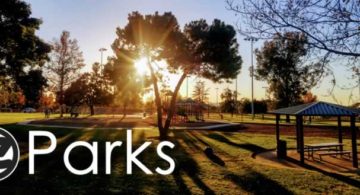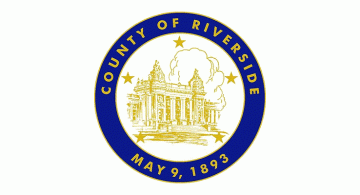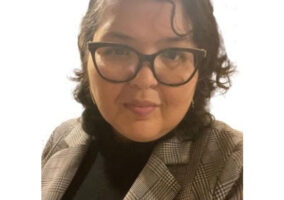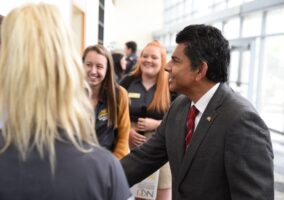Riverside Art Museum Exhibit Delves into EO 9066, Harada House, and Mine Okubo

Opening Reception: Friday, February 2, 2018, 6 p.m. – 8 p.m.
Riverside CA – The Riverside Art Museum (RAM) proudly presents Wendy Maruyama: E.O. 9066, February 3 – May 27, 2018, with a free, open-to-the-public Opening Reception on Friday, February 2, from 6:00 p.m. – 8:00 p.m. This exhibition is generously sponsored by Burgess Moving & Storage, and Bob Harris and Susan Rothermund, with special thanks to the Riverside Metropolitan Museum and the Japanese American National Museum. Exhibit-related programming for this exhibition was made possible with support from the California Civil Liberties Public Education Program at the California State Library.
Artist Wendy Maruyama’s work explores the impact President Roosevelt’s Executive Order 9066 had on her family and Japanese-Americans. The work incorporates objects and imagery that depict the realities of the imprisonment of approximately 120,000 Americans of Japanese ancestry and resident aliens from Japan during WWII.
In an atmosphere of World War II hysteria, President Roosevelt, encouraged by officials at all levels of the federal government, authorized the internment of tens of thousands of American citizens of Japanese ancestry and resident aliens from Japan. Roosevelt’s Executive Order 9066, dated February 19, 1942, gave the military broad powers to ban any citizen from a fifty- to sixty-mile-wide coastal area stretching from Washington state to California and extending inland into southern Arizona. The order also authorized transporting these citizens to assembly centers hastily set up and governed by the military in California, Arizona, Washington state, and Oregon.
My first visual experience of this event was initially through the images of documentary photographers Dorothea Lange and Toyo Miyatake. My family was directly affected by the evacuation: but little was mentioned of this by my mother or grandparents. This chapter in my family history was heavily veiled: because of this, I avoided any association with this connection: partially out of suppressed anger, partially out of just wanting to move forward. I was awarded an artist-in-residency opportunity at SUNY Purchase College in Fall 2008 – and decided to immerse myself in research and investigation of EO 9066 and its effect on the Japanese American psyche as I know it now. This is just the beginning and it is a point of departure. – Wendy Maruyama
E.O. 9066 involves a series a wall-mounted cabinets and sculptures referencing themes common in the camps. This exhibition also showcases six sculptural bundles from Maruyama’s The Tag Project. Consisting of replicas of the paper ID tags that those incarcerated were required to wear when they were being forcibly relocated, the tags were grouped into ten sculptural bundles suspended from the ceiling, each representing one of the camps. They evoke a powerful sense of the humiliation endured and the sheer numbers of those displaced. Bundles representing the Amache, Gila River, Tule Lake, Manzanar, Heart Mountain, and Topaz camps will be shown at RAM.
Also part of this exhibition will be information and artifacts related to the Harada House in Riverside and artist Mine Okubo.
Exhibit-Related Programming
Opening Reception: Friday, February 2, 2018, 6 p.m. – 8 p.m.
Day of Remembrance Weekend: Saturday, February 17, & Sunday, February 18, 2018, Free
President Roosevelt signed Executive Order 9066 on February 19, 1942. The Day of Remembrance is observed to remember the forced incarceration of some 120,000 Japanese-Americans and its impact. Admission is free and we will offer docent tours of Wendy Maruyama: E.O. 9066 at 1 p.m. on both days.
Tag Yourself Project Debut: Thursday, March 1, 208, 6 p.m. – 9 p.m., Free
RAM invites visitors to reflect on civil liberties and stand with those who fight to protect them by creating a paper ID tag, reminiscent of the ones Japanese-Americans were required to wear when being forcibly relocated to incarceration camps during WWII, using small self-portraits taken with polaroid cameras. Participants can add their tag to a Solidarity Wall for the duration of the Wendy Maruyama: E.O. 9066 exhibition. The Tag Yourself Project is also part of Play the Museum.
Riverside Love Story, an Artist-in-Residence Project
Renowned storyteller Brenda Wong Aoki and Emmy Award-winning composer Mark Izu will weave Asian-American history, family legend, and humor together in a vibrant celebration of our community. Inspired by Wendy Maruyama: E.O. 9066, Brand and Mark will place their focus on the interracial connections (including love stories) around the time of the incarceration and the impact on their descendants today. Because of a long-shred history, they will specifically reach out to the Chicano/Mexicano and Japanese-American communities in Riverside
A youth art class focusing on this exhibition for inspiration is also scheduled for Wednesdays, March 21 – April 25 (no class April 4), 4 p.m. – 5:30 p.m. Please check our website or call the Visitor Services desk for more information and to sign up.
The Riverside Art Museum integrates art into the lives of people in a way that engages, inspires, and builds community by providing high quality exhibits and art education programs that instill a lifelong love of the arts. RAM relies on the generosity of members and donors to support its exhibitions, education programs, and special events. A 60-plus-year-old, non-profit cultural arts institution housed in a National Historic 1929 building designed by Hearst Castle and AIA Gold Medal-winning architect Julia Morgan, the museum welcomes over 50,000 visitors a year. The museum is open Tuesday – Saturday, 10:00 a.m. – 4:00 p.m. and Sunday, 12:00 noon – 4:00 p.m. For information on exhibits, events, classes, memberships, or sponsorship opportunities, visit www.RiversideArtMuseum.org. For information about the proposed Cheech Marin Center for Chicano Art, Culture & Industry at the Riverside Art Museum, visit www.riversideartmuseum.org/cheech. Find us on Facebook (www.facebook.com/riversideartmuseum), Twitter (RAMRiverside), Instagram (@riversideartmuseum), and Pinterest (www.pinterest.com/ramarts).
Sponsored by: Burgess Moving & Storage, Bob Harris & Susan Rothermund, California State Library
Special thanks to the Riverside Metropolitan Museum and the Japanese American National Museum.

























